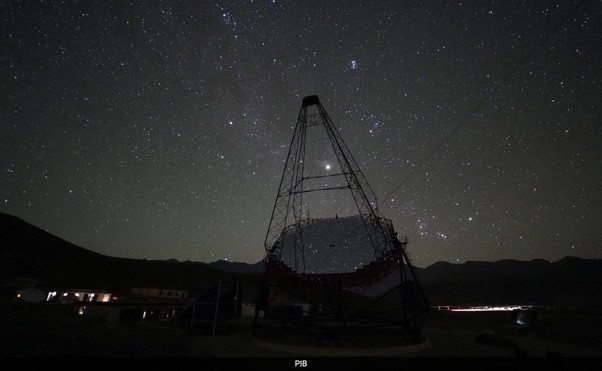About MACE observatory
- It is the highest and largest imaging Cherenkov telescope in Asia and the world located at an altitude of almost 4,300 metres.
- It is built indigenously by the Bhabha Atomic Research Centre (BARC), Electronics Corporation of India Ltd (ECIL), Tata Institute of Fundamental Research (TIFR) and the Indian Institute of Astrophysics (IIA).
| Why Hanle? |
|
Scientific Objectives of the MACE Observatory
- Observe high-energy gamma rays from some of the most energetic events in the universe, such as: Supernovae, Black Holes gamma-Ray Bursts.
- Detect and understand dark matter,
- Complement existing observatories worldwide, strengthening India’s role in multi-messenger astronomy.

| Related Terms |
|


 SEBI’s SWAGAT-FI Framework for Low-Ris...
SEBI’s SWAGAT-FI Framework for Low-Ris...
 How the US and China Are Sabotaging the ...
How the US and China Are Sabotaging the ...
 Village Defence Guards (VDGs): Role, Str...
Village Defence Guards (VDGs): Role, Str...

























